 |
セインさん。今日は浅草橋の人形店「吉德」にやってきました。正徳元年(1711)創業の老舗で、今のご当主で12代目です
Concierge (C): Thayne-san, today we’ve come to the Yoshitoku doll shop in Asakusabashi. This is an old shop that was established in 1711. The current proprietor is the 12th generation. |
|
|
 |
僕も女の子の父親なので、吉德の名前はよく知っています。「顔がいのちの、よ~し~と~く~♪」と歌うCMも有名ですね。
Thayne (T): I have a daughter, so I’m familiar with the name Yoshitoku. They’re also famous for that commercial with a song, aren’t they? |
|
|
|
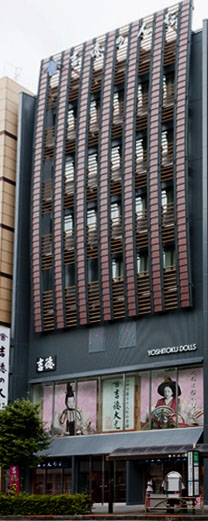
吉德外観
[Photo: Yoshitoku’s exterior] |
|
|
|
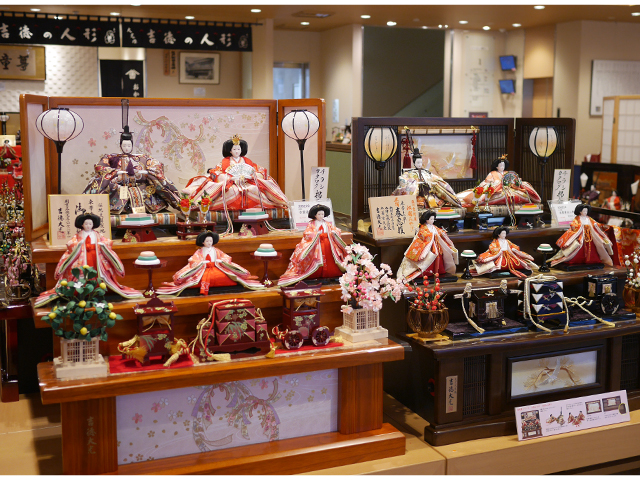
店内
[Photo:Interior] |
|
|
| (山田) |
こんにちは!セインさん。吉德の山田德兵衞です。
Yamada (Y): Hello, I’m Tokubei Yamada of Yoshitoku. |
|
|
 |
こんにちは、山田さん。この時期(取材は1月)は、お店がひな人形で埋め尽くされて、壮観ですね! 江戸時代に創業した時から、人形の専門店だったのですか?
T: Hello, Yamada-san. Wow, at this time of year (January) the store is full of Hina dolls. What a sight! Has this store specialized in dolls since its establishment in the Edo Period? |
|
|
| (山田) |
初代は今の愛知県、知多半島の出身で、江戸に出てきて、ここに店を開いたのですが、当時は人形だけでなく、おもちゃや扇子なども売っていました。
この浅草橋という場所は、ここから日光街道・奥州街道が始まり、また神田川が隅田川に出る交通の要衝で、浅草御門・浅草見附と言われていました。そして、浅草観音への道筋にあたることから、朝、門が開くと、参詣に向かう人がドッと流れ込んでくるような場所でした。
Y: Our founder came from the Chita Peninsula in present-day Aichi Prefecture. He came to Edo and opened the store here, but at that time we didn’t just have dolls. We also sold things like toys and fans.
The old Nikko Kaido and Oshu Kaido routes both started from Asakusabashi, and it’s also the point where the Kanda River flows into the Sumida River, so it was an important location for transport. It was also on the way to Asakusa Kannon (Senso-ji Temple), and that’s why it was referred to as the “Gateway to Asakusa.” In the morning, when the gates were opened, there would be a rush of people heading to the temple. |
|
|
 |
お店をするには最高の立地ですね。
T: It was the ideal location for a shop. |
|
|
| (山田) |
おかげさまで、うまくいったようです。やがて問屋として商うようになりました。初代は6代将軍・家宣公から「吉野屋」の屋号をいただきましたが、6代目からは代々の当主が德兵衞を名乗るようになって、今日まで続いています。
Y: We were very fortunate. We eventually started trading as a wholesaler . We were even given the name Yoshinoya by the sixth shogun, Tokugawa Ienobu. Starting from our own sixth-generation proprietor, we have all used the name Tokubei, continuing even today. |
|
|
|
|
 |
「吉德」という社名は、吉野屋の德兵衞の店、ということなんですね。
T: Your trading name Yoshitoku actually refers to Tokubei of Yoshinoya, doesn’t it? |
|
|
| (山田) |
はい。そして、明治、大正とずっと人形とともにおもちゃも商っていたんですが、関東大震災を契機に人形の専門店になりました。現在は、ひな人形や五月人形などの節句人形が売り上げの8割、あとの2割が動物やキャラクターの縫いぐるみなどです。
Y: That’s right. Also, throughout both the Meiji and Taisho periods we traded in toys along with dolls, but, after the 1923 Great Kanto earthquake, we switched to specializing in dolls. Today, dolls for seasonal festivals such as the Hinamatsuri Festival and the Boys’ Day Festival make up 80 percent of our sales, while the other 20 percent is things like animal or character stuffed toys. |
|
|
|
|
 |
アンパンマンやピーターラビット、スヌーピー、それから読売ジャイアンツのジャビットなどのキャラクターものも、たくさん扱っておられるんですね。
でも、なんと言っても、吉徳といえばひな人形!
C: There’s Anpanman, Peter Rabbit, Snoopy and even the Yomiuri Giants’ mascot Giabbit — you certainly deal in a lot of different items.
But of course, the name Yoshitoku always brings to mind Hina dolls! |
|
|
| (山田) |
ありがとうございます。
セインさん。ひな人形・おひなさまは、なんのためにある人形だと思いますか?
Y: Thank you. Thayne-san, what do you think is the purpose of Hina dolls and the traditional doll displays? |
|
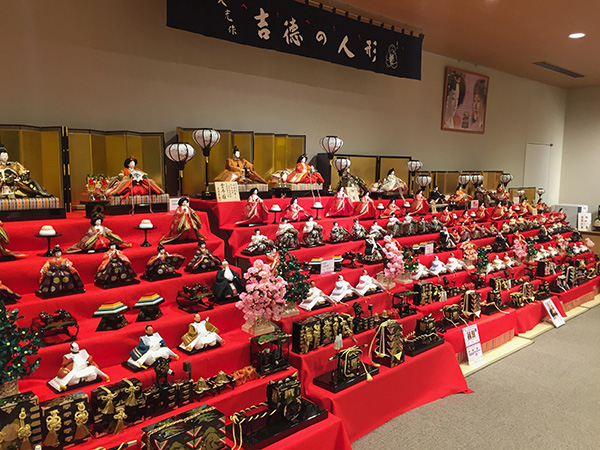
ひな人形・おひなさま
[Photo: Hina ningyo] |
 |
女の子の誕生を祝って、贈るんですよね?
T: It’s to celebrate the birth of a girl, and then to give to her, right? |
|
|
| (山田) |
そのとおりです。でも、もう少し詳しく言いますと、ひな人形はその女の子の災いを一身に引き受ける身代わりの人形なんです。
ひな人形のルーツは、紙や藁などで人の形を作り、それで身体を撫でて身の穢れをうつして水に流した「人形(ひとがた)」です。つまり、ひな人形には、その子にふりかかる災いや穢れを代わりに背負うことが託されているんです。ですから、その子が無事に成長したところで、人形の役目は終わりになります。
Y: That’s exactly right. However, to be a little more specific, Hina dolls are in fact a stand-in for the girl herself, as a way of inheriting her misfortunes.
The roots of Hina dolls actually come from a practice called “hito-gata,” where people would make human figures out of paper and straw, and rub the figures’ bodies to transfer all their impurities to the doll. And finally they would let the doll away in water. In other words, Hina dolls are entrusted with taking on any misfortunes or impurities that may befall the girl. Therefore, once the girl safely reaches adulthood, the role of the doll is fulfilled. |
|
|
 |
……知らなかった!
T: Wow, I didn’t know that! |
|
|
 |
ということは、その女の子の下に、妹が生まれたら、その妹のための人形がまた必要なんですね? 姉妹二人で一つのおひなさまを共有したり、お母さんのおひなさまを子どもに譲るのも、本来の意味を考えるとダメなんですね。
C: So, that means that if another daughter were born after the first girl, it would be necessary to get a second doll for her? Sharing one doll between two sisters, or a mother passing down a Hina doll to her child is actually bad, if we think about the original meaning. |
|
|
| (山田) |
はい。ひな人形は本来、一人に一つなんです。
Y: Yes. There is supposed to be only one doll per person. |
|
|
 |
なるほど。ひな人形の世界は面白いですね。ひな人形は、一人が作っているんですか?それともたくさんの職人さんが関わっているんですか?
T: I see. The world of Hina dolls really is interesting. Does just one person make an entire doll? Or are many artists involved in the process? |
|
|
| (山田) |
ひな人形は、基本的に分業制なんです。お顔だけを作っている職人、胴体のみを作っている職人、手足はまた別の、手足専門の職人が作っています。そのほかに、小道具類や着物なども入れると数えきれないくらいいろいろな人の手を経て、ひな人形が生まれているんです。
Y: Hina dolls are generally made in sections. There are people who work on just the face, just the body, and then there are limb specialists who work on the arms and legs. Once the various accessories and clothing are also added, a Hina doll will have passed through an uncountable number of hands. |
|
|
 |
ホーッ、今日の話は、驚くことばかりです。
五月の端午の節句の人形や鯉のぼりにも、そういう面白い話はありますか?
T: Wow, I’m learning so much today. Do the dolls and koinobori carp streamers used in the Boys’ Day Festival also have an interesting history like that? |
|
|
| (山田) |
端午の節句も、やはり災いを祓う行事として中国から伝わってきたものですが、日本では江戸時代に端午が幕府の重要な式日となり、将軍にお世継ぎが生まれると城中にのぼりや作り物の槍や兜などを立てて盛大に祝うようになりました。これを江戸の庶民が真似て、精巧な鎧兜のミニチュアなどを飾ったり、のぼりを立てるなどして家の外も飾り立てたのが、私たちが楽しんできた端午の節句です。
鯉のぼりは、この「のぼり」が発展したもので、「この家に男子が誕生した。跡継ぎができた」というのをアピールするのと同時に、門松のように、幸いをもたらす神様が降りてくる時の目印・依り代(よりしろ)でもあるんです。この家に間違いなく降りて来て、この家族を守ってください、というわけです。
Y: For the Boys’ Day Festival, the practice of warding off misfortune was introduced from China; however, in Japan it became an important ceremony for the shogunate during the Edo Period. Following the birth of a male successor, banners and decorative spears and helmets would be set up throughout the castle in a magnificent celebratory display. The commoners of Edo would imitate these celebrations by displaying elaborate miniature helmets and sets of armor and hanging banners outside their houses. This became the Boys’ Day Festival we all enjoy today.
The banner part of the koinobori carp streamer was intended to show the world that a boy had been born to the household, ensuring succession, while at the same time also act like the New Year kadomatsu decoration, as a landmark encouraging gods bringing fortune to visit the house. It’s as if to say something like “Yes, this is the right house. Please come and protect this family.” |
|
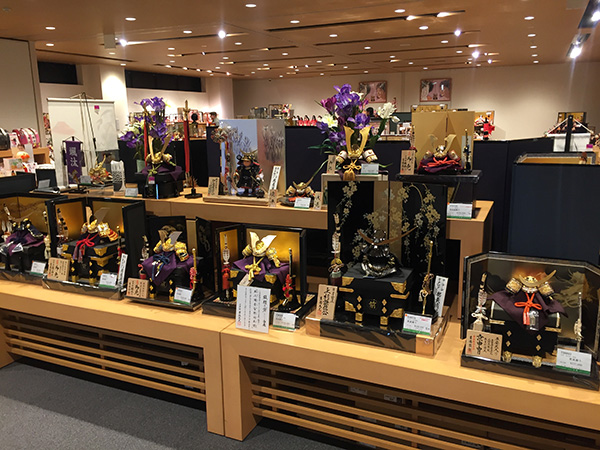
五月人形
[Photo: Boys’ Day Festival dolls] |
 |
庶民が幕府や宮中の儀式を真似て、こういう文化をつくっていったというのがおもしろいですね。
C: It’s so interesting that the commoners started imitating the ceremonies of the shogunate and the imperial court and ended up creating this new culture. |
|
|
| (山田) |
はい。でも、おひなさまの三人官女は、平安朝の宮中の女官のような姿をしていますが、五人囃子は武家の少年の姿をしていて、統一感がないでしょう? これも宮中や武家など、見たこともない世界を、庶民が想像をふくらませて作っていったからなんです。節句人形には、そういうフィクション、大らかなアレンジが散りばめられているんです。
Y: Indeed. However, while the three court ladies of the doll display represent court ladies from the Heian Period, the five court musicians represent the young sons of samurai families. Doesn’t the lack of unity seem strange? This is because the imperial court and the samurai class were worlds that the commoners had never glimpsed, and so they created them from their imaginations. The festival dolls are full of these fictional, liberal interpretations. |
|
|
 |
おもしろいですね! アメリカには、人形に願いや祈りを託すことがないので、どの話も知らないことばかりでした。
T: That’s fascinating! We don’t have such a tradition of entrusting wishes and prayers to dolls in the US, so I knew nothing about this. |
|
|
| (山田) |
いや、日本人でも知らない人が多くなっています。ですから、私たちには、人形を売るという商いだけでなく、日本人がずっと大事にしてきた風習や、家族で行ってきた祝い事の大切さを伝えていく使命があると思っているんです。
いま、ひな祭りも端午の節句も、幼稚園やショッピングセンターのイベントのようになっているでしょう? 皆で、にぎやかにお祝いをするような。でも、本来は家で人形を飾り、わが子のために祝い、祈った、ささやかだけれど大事な家族のお祭りでした。そういうことをもっと伝えていかなければならないと思っているんです。
Y: Don’t worry, there are many Japanese people who don’t know about this either. That’s why I feel that, rather than simply selling dolls, our mission should be to convey the importance of this long-standing family celebration.
These days, the Hinamatsuri Festival and the Boys’ Day Festival seem to have evolved into lively events held at kindergartens or shopping centers, where everyone makes their wishes together. However, the origin of this important yet modest family celebration was to display dolls at home, and to make wishes and pray for one’s child. I feel like we need to further impart this message. |
|
|
 |
セインさん、この浅草橋の吉德の本店4階には「吉德これくしょん」という展示室があって、主に十代目、人形研究家だった山田さんのおじいさまが蒐集した人形や玩具などを無料で一般に公開しています。ひな人形の変遷がわかる古雛や五月人形、御所人形、羽子板などのほか、人形や玩具が描かれた浮世絵など貴重な史料が見られますよ。
C: Thayne-san, on the fourth floor of this store is an exhibition room called Yoshitoku Collection where there is currently a free display of dolls and toys mainly collected by Yamada-san’s grandfather, who was a doll researcher and the 10th-generation proprietor. We can see old Hina dolls that show the evolution of the craft, Boys’ Festival dolls, imperial dolls and hagoita rackets as well as valuable historical items such as ukiyo-e paintings that depict dolls and toys. |
|
|
|
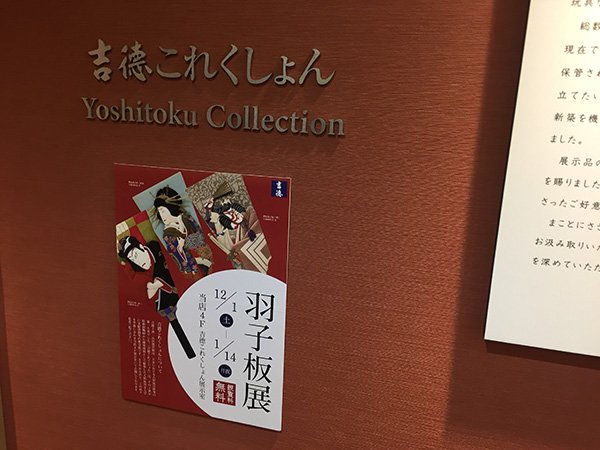
吉德これくしょん
[Photo: Yoshitoku Collection] |
 |
見に行きましょう!
今日は、いい勉強になりました。すぐ娘にも話さなくちゃ。
T: Let’s go take a look!
I really learned a lot today. I need to go home and tell my daughter all about it. |
|
|
  |
ありがとうございました。
T: Thank you very much. |
|
|
|
|
|
|
|
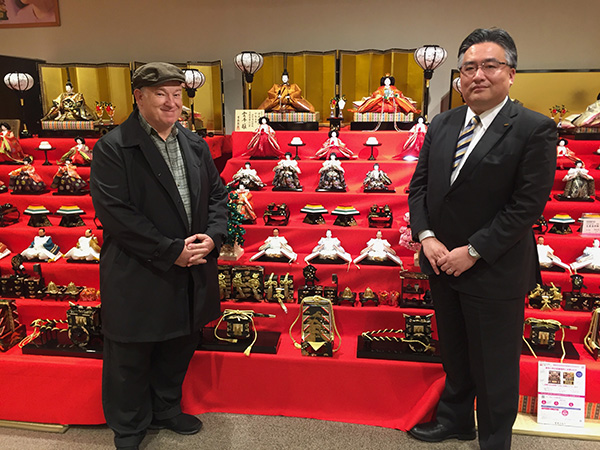
【記念撮影】
[Photo: Commemorative photo] |
|
|
|
(文)太田美代 (英訳)デイビッド・A・セイン |
 1959年、米国生まれ。証券会社勤務を経て来日し、翻訳・通訳など多岐にわたって活躍。豊富な教授経験を生かし、数多くの英語関係書籍を執筆。近著に『日本人のチョットへんな英語』(アスコム)、『超入門シャドーイング』(主婦の友社)、日本人が使いすぎる英語(PHP文庫)など多数。 下町の魅力に魅了され、自身が代表を務める英語関連のコンテンツ会社のエートゥーゼットのオフィスを根津に構えている。英会話本の執筆をしながら、東京・文京区根津と春日にあるエートゥーゼット英語学校の校長も務める。 http://www.smartenglish.co.jp/
1959年、米国生まれ。証券会社勤務を経て来日し、翻訳・通訳など多岐にわたって活躍。豊富な教授経験を生かし、数多くの英語関係書籍を執筆。近著に『日本人のチョットへんな英語』(アスコム)、『超入門シャドーイング』(主婦の友社)、日本人が使いすぎる英語(PHP文庫)など多数。 下町の魅力に魅了され、自身が代表を務める英語関連のコンテンツ会社のエートゥーゼットのオフィスを根津に構えている。英会話本の執筆をしながら、東京・文京区根津と春日にあるエートゥーゼット英語学校の校長も務める。 http://www.smartenglish.co.jp/













